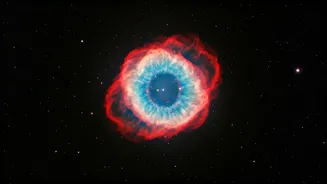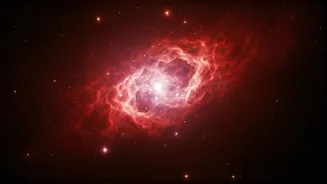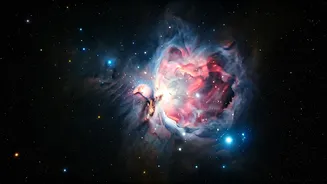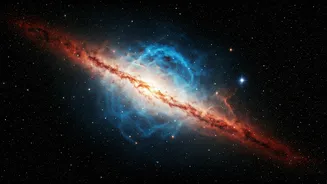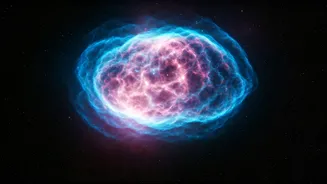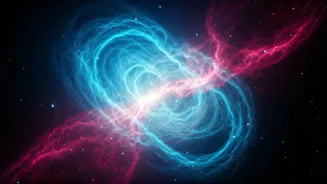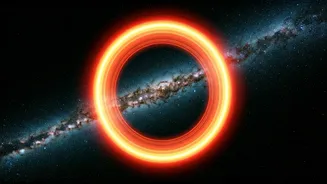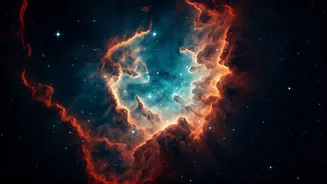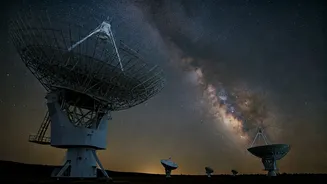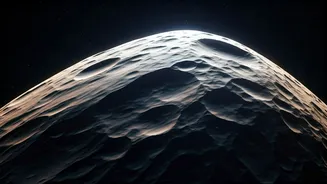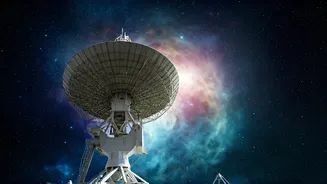Stellar Evolution Revealed
The James Webb Space Telescope (JWST) is giving astronomers an unparalleled look at the final stages of stars. These observations are not just aesthetically
pleasing; they provide crucial data for understanding how stars evolve over billions of years. When a star like our sun exhausts its nuclear fuel, it can no longer sustain the outward pressure that balances the inward pull of gravity. The core collapses, and the outer layers are ejected into space, forming what's known as a planetary nebula. JWST's instruments are finely tuned to detect infrared light, enabling them to peer through cosmic dust clouds that often obscure these dying stars. This allows scientists to see the intricate structures and chemical compositions of these nebulae in remarkable detail, providing insights into the processes shaping them.
JWST's Stunning Imagery
JWST's capacity to see the universe in infrared light has yielded stunning images of dying stars that were previously hidden from view. These images reveal complex structures within planetary nebulae, such as glowing gas filaments, knots, and intricate patterns of light and shadow. The detail is so sharp that astronomers can now study how different elements are distributed within these nebulae and how the expelled stellar material interacts with the surrounding interstellar medium. The breathtaking images are a testament to JWST's technological prowess, and have been instrumental in allowing us to visualize the dynamics of stellar death. For instance, the telescope can differentiate the chemical composition of nebulae which helps determine the elements ejected by the dying star.
What Awaits Our Sun?
Studying the death of other stars helps scientists understand the future of our own sun. When our sun runs out of fuel, it will also evolve into a red giant, eventually shedding its outer layers to form a planetary nebula, leaving behind a dense white dwarf. JWST's observations of other sun-like stars in their final phases gives us a preview of this process. It helps scientists to refine models of stellar evolution and to predict what our solar system might look like billions of years from now. By examining the sizes, shapes, and chemical compositions of different nebulae, astronomers can improve their understanding of how these structures form and evolve, offering crucial context for our sun's inevitable fate.
Scientific Breakthroughs
JWST's data is more than just pretty pictures; it's driving significant scientific breakthroughs. By analyzing the light emitted by these nebulae, astronomers can determine the abundance of different elements, their temperatures, and their velocities. This information provides insights into the physical processes that shape these objects. Furthermore, JWST's infrared observations allow researchers to study the dust grains that are formed within planetary nebulae. These dust particles contain heavy elements synthesized in the cores of stars, which are then dispersed into space. Analyzing them helps to uncover the creation of the heavier elements that make up planets and life. JWST's revelations contribute substantially to our understanding of the cosmic cycle and the origins of everything around us.
Future Research Directions
The work of JWST has only begun. Future research using JWST will delve even deeper into the intricacies of stellar death. Astronomers are planning to use JWST's advanced spectroscopic capabilities to further analyze the chemical composition and physical conditions within planetary nebulae. They will study the interaction of the ejected stellar material with the surrounding environment, looking for signs of shock waves and turbulence. They also aim to observe planetary nebulae at different stages of their evolution, helping to build a more complete picture of how they form and disperse over time. As data comes in, the JWST is likely to provide even more exciting discoveries about the end-stages of stars and the lifecycle of our galaxy.
